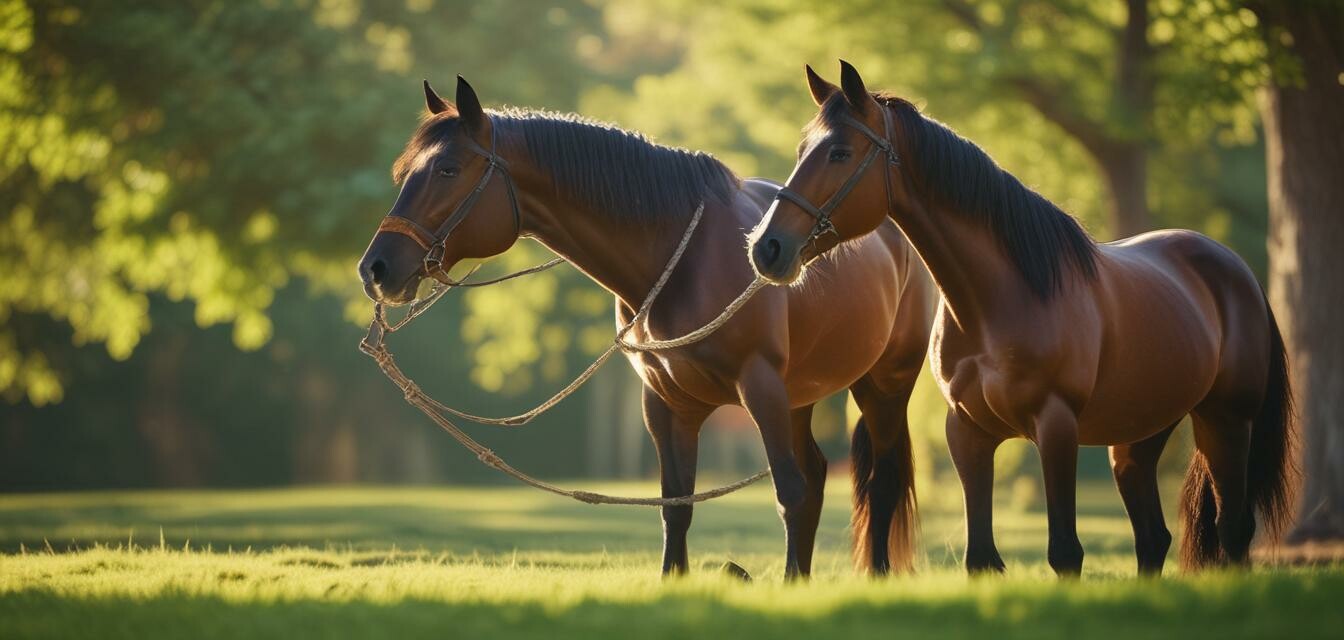
Effective Groundwork Techniques for Better Riding
Key Takeaways
- Groundwork builds trust and communication between horse and rider.
- Essential techniques include lunging, leading, and desensitization.
- Regular groundwork enhances performance and safety under saddle.
- Understanding horse body language is crucial in effective groundwork.
- Establishing a routine can help reinforce your training goals.
Groundwork is a fundamental aspect of horse training that significantly enhances the bond and communication between horse and rider. By mastering effective groundwork techniques, you set the stage for better performance when riding. Not only does groundwork improve your horse's obedience and responsiveness, but it also helps to build trust, ensuring a safer and more enjoyable experience in the saddle. In this article, we will explore several essential groundwork techniques that can elevate your riding journey.
What is groundwork?
Groundwork refers to various exercises and activities you perform on the ground, primarily focusing on your horse's training and responsiveness without the rider's weight. These exercises can include leading, lunging, and desensitizing, all of which play a critical role in developing a well-rounded equine partner. You can think of groundwork as the foundation on which you build your riding skills.
Benefits of effective groundwork
- Improved communication: Groundwork techniques allow riders to communicate more effectively with their horses, leading to clearer signals and responses.
- Increases trust: Establishing a solid groundwork routine helps to build trust between horse and rider.
- Enhanced connection: Working together on the ground strengthens the bond, fostering a positive relationship.
- Readiness for riding: A horse well-trained on the ground is often more prepared and willing under saddle.
- More manageable horses: Consistent groundwork can help address issues before they escalate during riding.
Essential groundwork techniques
Lunging
Lunging is a fundamental technique where you guide your horse in a circle around you on a lunge line. This helps the horse learn to balance and respond to cues while moving away from you. Here’s how to perform it:
- Start with your horse on a lead rope, standing at their shoulder.
- Use a lunge line to encourage your horse to move away while your body remains at a safe distance.
- Give clear vocal and physical cues to encourage the horse to move in a controlled manner.
Leading
Leading your horse is one of the most basic yet highly effective groundwork techniques. It teaches your horse to follow your cues and respect your space. Here are some tips for effective leading:
- Always use a halter and lead rope to maintain control.
- Establish a consistent pace and direction to create predictability for your horse.
- Practice stopping and starting to enhance responsiveness.
Desensitization
Desensitization helps your horse react calmly to various stimuli, such as noise, objects, and movements. It’s beneficial for reducing anxiety and ensuring your horse’s reliability under saddle.
- Introduce your horse to different stimuli at a distance.
- Gradually decrease the distance as your horse becomes more comfortable.
- Reward calm behavior to reinforce positive reactions.
Understanding body language
Being able to read your horse's body language is pivotal in effective groundwork. Horses communicate through body movements, and being aware of these signs can enhance your groundwork approach. Here are some common cues:
| Horse Behavior | Meaning |
|---|---|
| Ears pinned back | Annoyance or discomfort |
| Head held high | Confidence or excitement |
| Snorting | Curiosity or a sign of agitation |
| Relaxed stance | Comfort and readiness to engage |
Establishing a groundwork routine
Having a consistent groundwork routine is crucial for reinforcing the teachings during your sessions. Below are some recommendations for creating a routine:
- Set aside dedicated time for groundwork each week.
- Focus on specific techniques during each session, rotating to cover everything over time.
- Keep sessions short but productive, aiming for about 20 to 30 minutes.
Tips for beginners
- Start with basic techniques before progressing to more complex ones.
- Be patient; both you and your horse will need time to learn.
- Seek instruction from knowledgeable trainers if necessary.
- Always reward your horse for positive behavior.
- Maintain a positive attitude, essential for your horse's learning experience.
Pros
- Strengthens the bond between horse and rider.
- Improves safety and performance during riding.
- Encourages the horse’s focus and respect for the rider.
- Enhances understanding of horse behavior and body language.
Cons
- May require time and patience to show results.
- Initial challenges can arise with untrained horses.
- Health considerations for both horse and rider during sessions.
Conclusion
Incorporating effective groundwork techniques into your routine can create a solid foundation for a successful riding experience. By mastering lunging, leading, and desensitization, you not only improve your horse's skills but also create a bond built on trust and communication. For more tips and insights on improving your riding skills, be sure to check out our Rider Tips and Advice section, and elevate your riding journey today!
